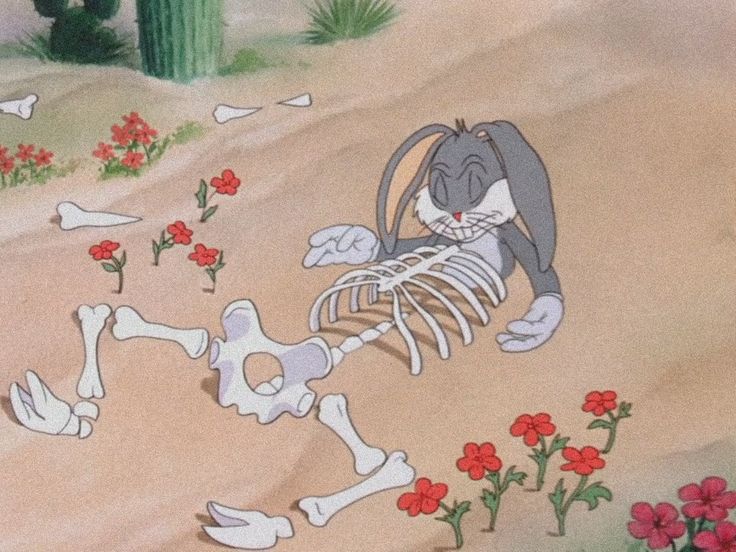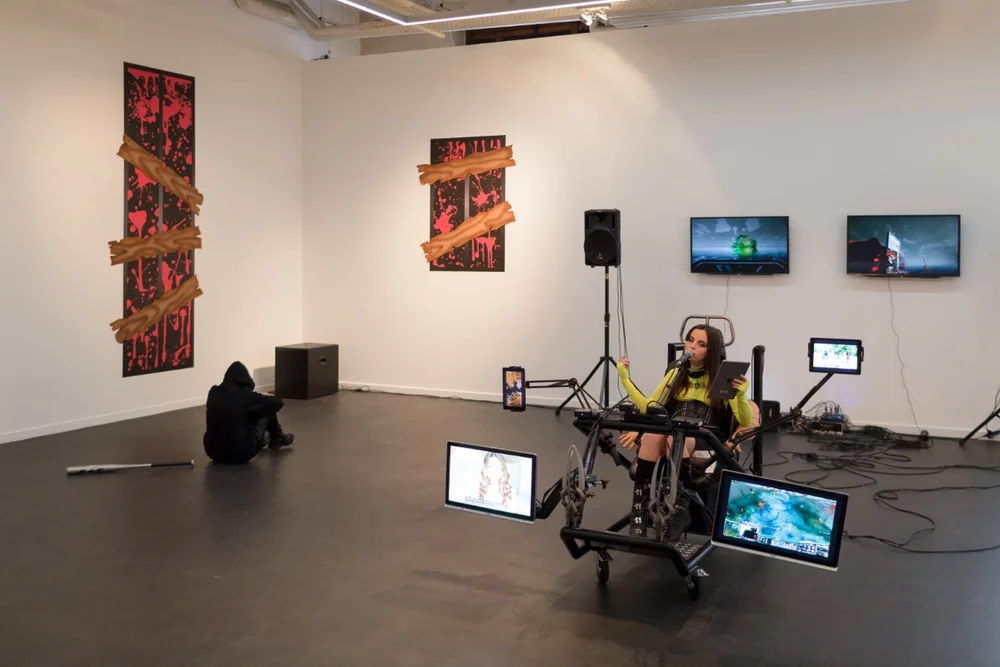
INTERNET BALLADE
NOV. 2, 2018 @ HEAD
Internet Ballade is a performance created in collaboration with Mathilde Fernandez for The Internet Psychoanalysis, a group exhibition curated by Lauren Huret at LiveInYourHead (HEAD – Genève), on November 2, 2018 from 6:00 to 10:00 PM. The exhibition featured works by Celine Aernoudt, Pauline Coquart, Mathilde Fernandez & Cécile di Giovanni, Mathis Gasser & Angharad Williams, Nelson Schaub, Viktor.
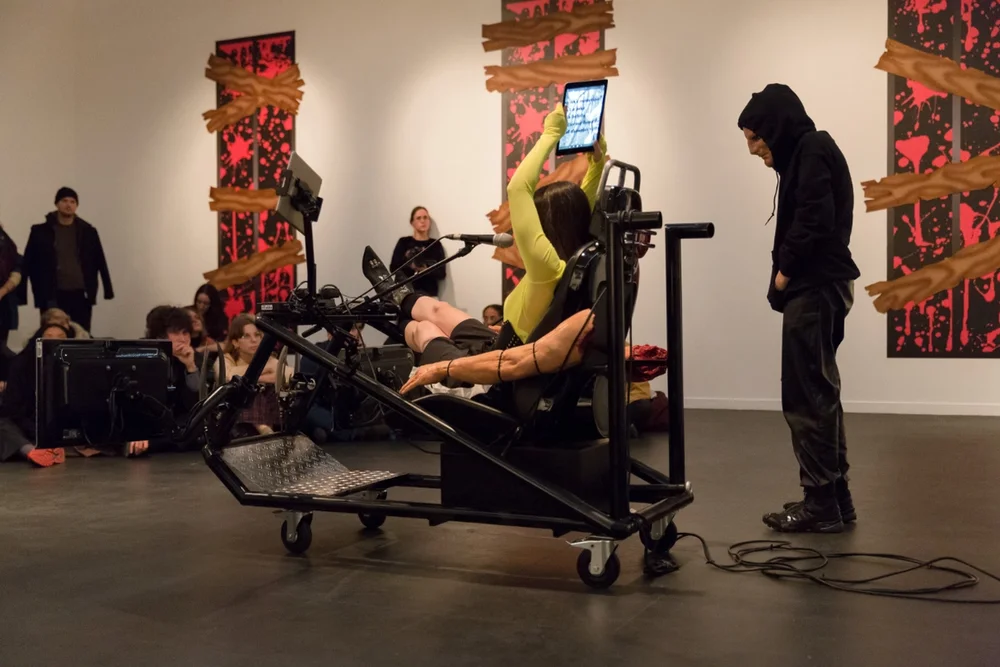
This one-night event unfolded as a collective psychoanalytic session in which the Internet itself took the role of the patient. Through a series of performances, readings, and interventions, the participating artists — including HEAD students and invited guests — explored the chaotic, obsessive, and fragmented psyche of the digital age.
The performance by Fernandez and di Giovanni unfolds as a contemporary odyssey — a crossing of the 21st-century Styx — where YouTube and its adolescent community serve as the primary terrain. Blurring the boundaries between performance, installation, and 3D immersion (developed in collaboration with Antony de Rueda), the work confronts the emotional residue of viral videos, online rituals, and digital oversaturation.
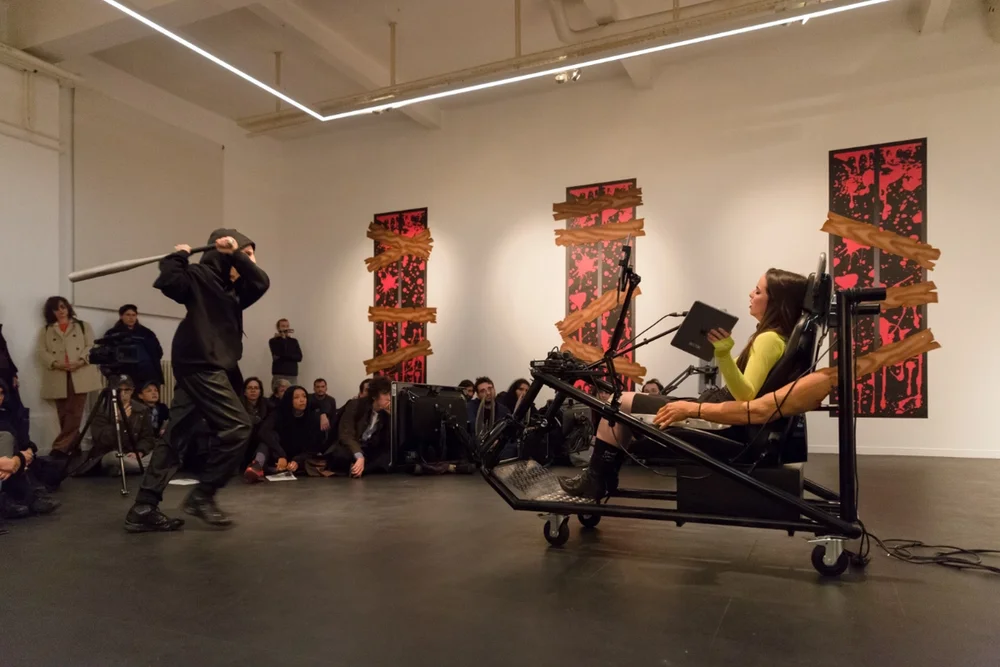
Show Date:
Friday, November 2, 2018 from 6:00 PM to 10:00 PM
Address:
LiveInYourHead - HEAD
Boulevard James-Fazy 15 1201 Geneva, Switzerland
The performance — featuring both artists on stage, with Cécile di Giovanni wearing a mask — channels a collective memory shaped by obsession, violence, vulnerability, and the false promise of digital permanence. Through visual, sonic, and psychological intensity, di Giovanni and Fernandez reflect on the monstrous tenderness of our digital condition, and what it means to come of age online.
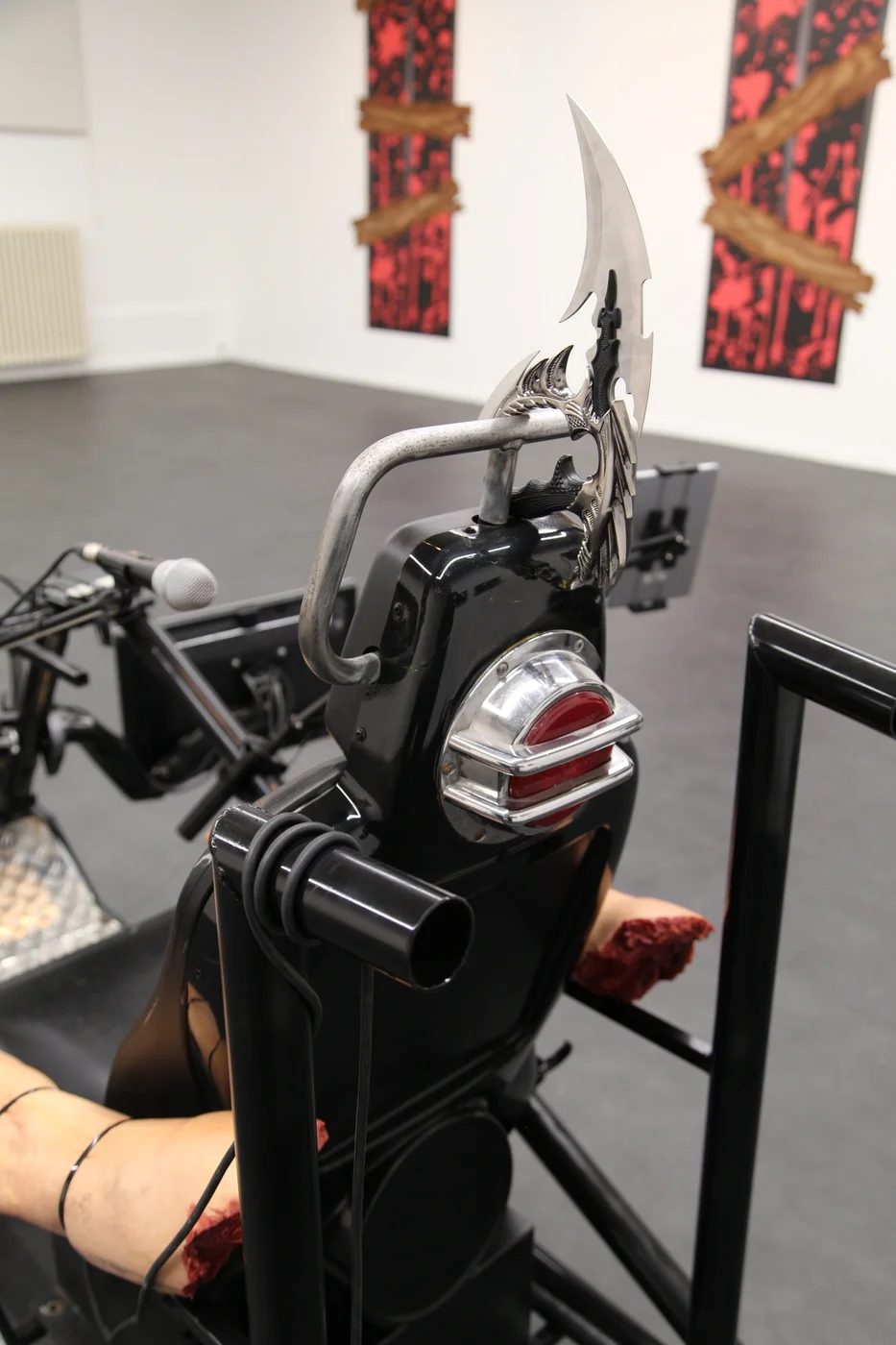
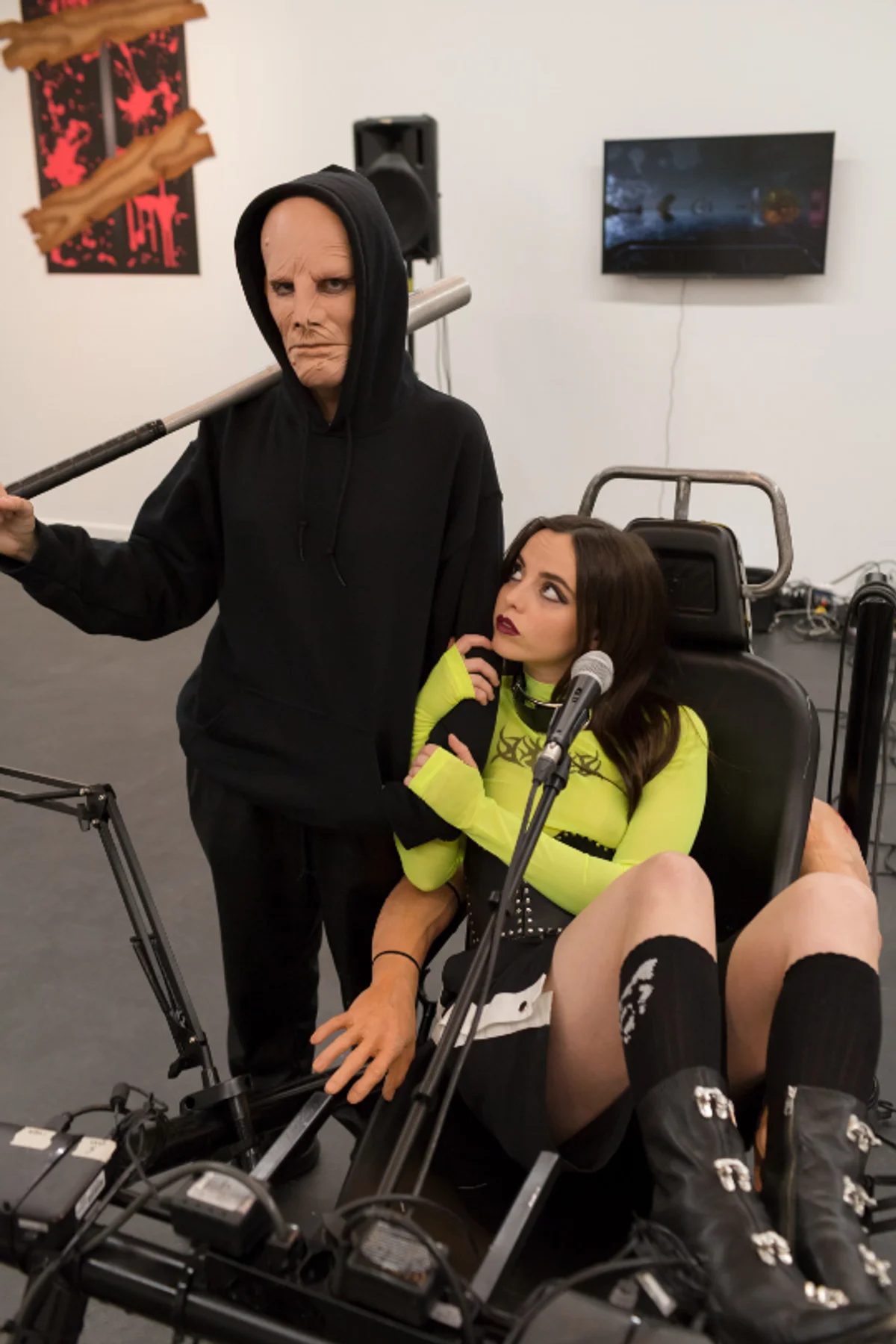
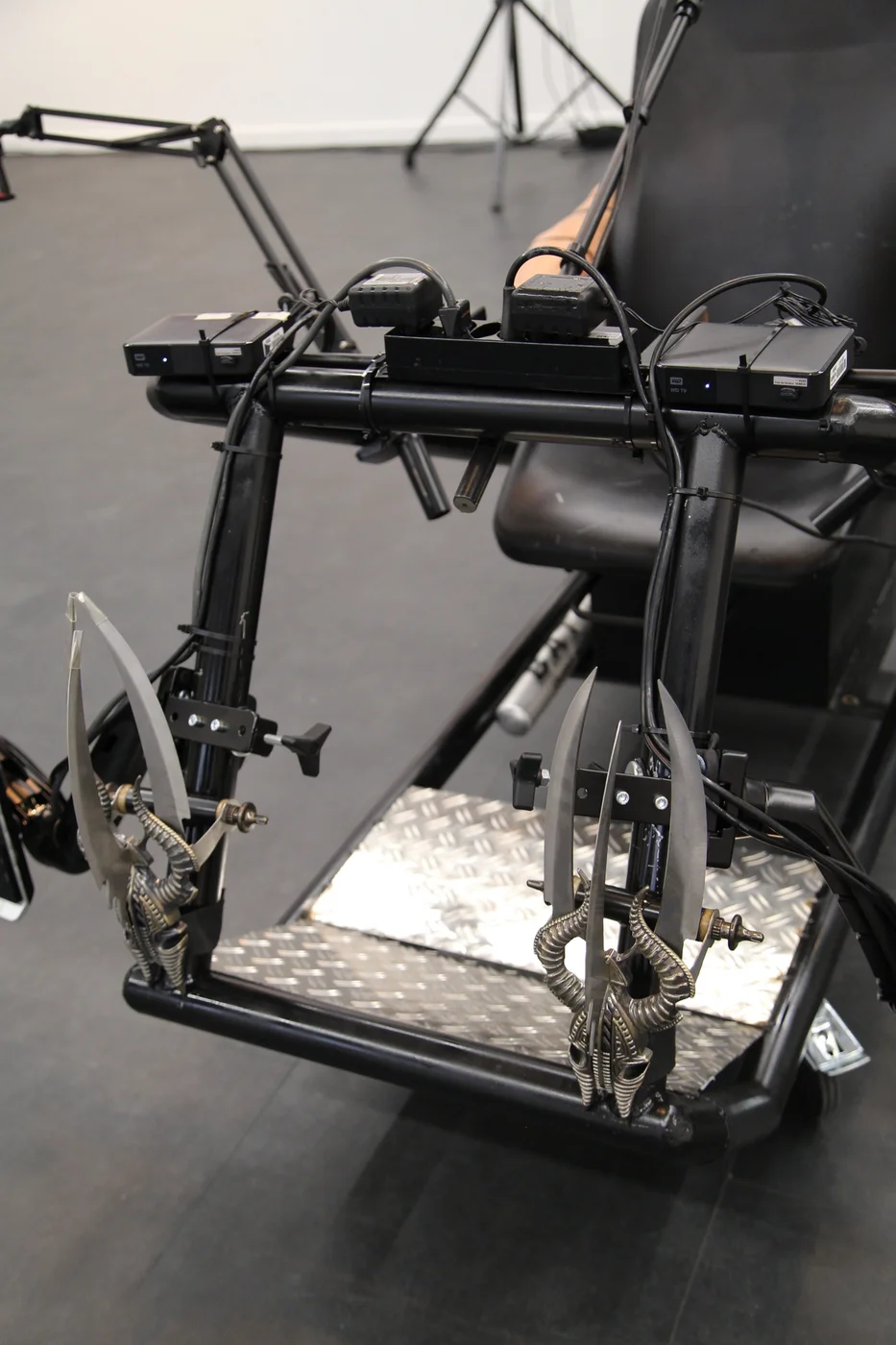
The psyche of the internet is a kind of inverted psychoanalytic concept. In the patient’s chair sits the Internet itself — in all its potentially psychotic, fantasized, ingested, and regurgitated dimensions — while in the role of the analyst are students from HEAD and invited artists. The analytical process will unfold over the course of a single, chaotic evening, within a setting specially designed by the artists for the occasion, intertwining performances, gestures, readings, and objects of all scales.
The Cart
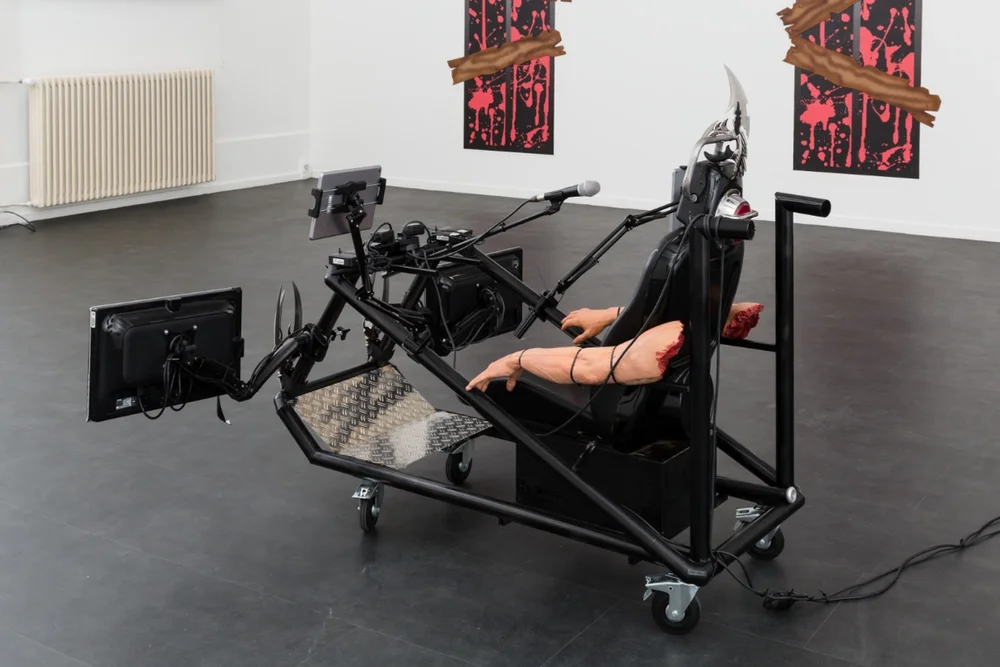
By placing “Internet” within a physical, transportable, and framed structure, the work enters a logic of sacralization through its container — turning what is normally invisible or diffuse into a staged contemporary relic.
Its makeshift appearance, built from salvaged components, evokes the aesthetics of DIY, hacking, or street installations, where the object becomes a system in and of itself. It thus functions as an analog terminal for a digital world — a handcrafted interface confronting the boundless immateriality of the network.
The cart that carries Mathilde Fernandez was conceived by Cécile di Giovanni. Echoing the metaphor of a boat crossing between shores and gradually encountering fragments of memory — here, in the form of problematic videos from online influencers — di Giovanni envisioned a kind of 2.0 vessel, drawing inspiration from a low-tech, hacker-inspired imaginary.

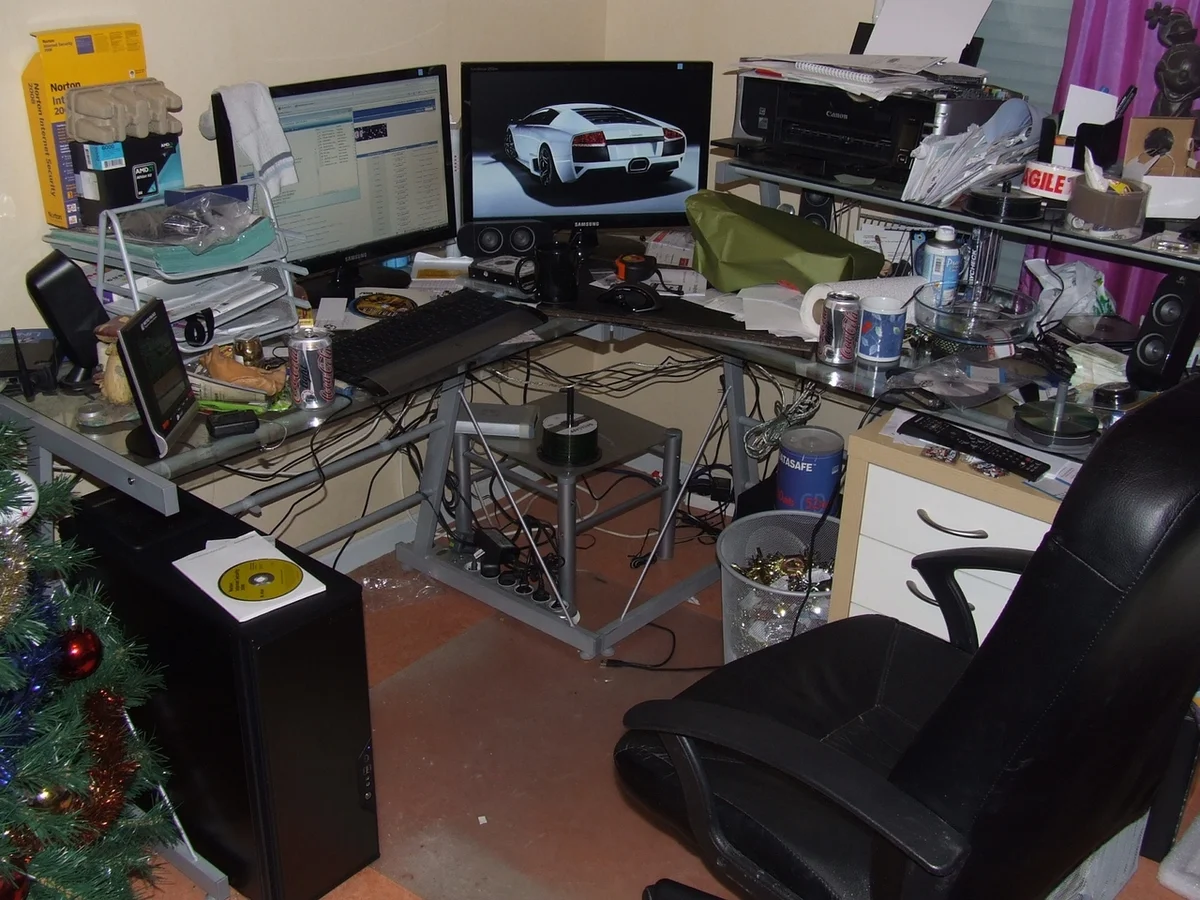
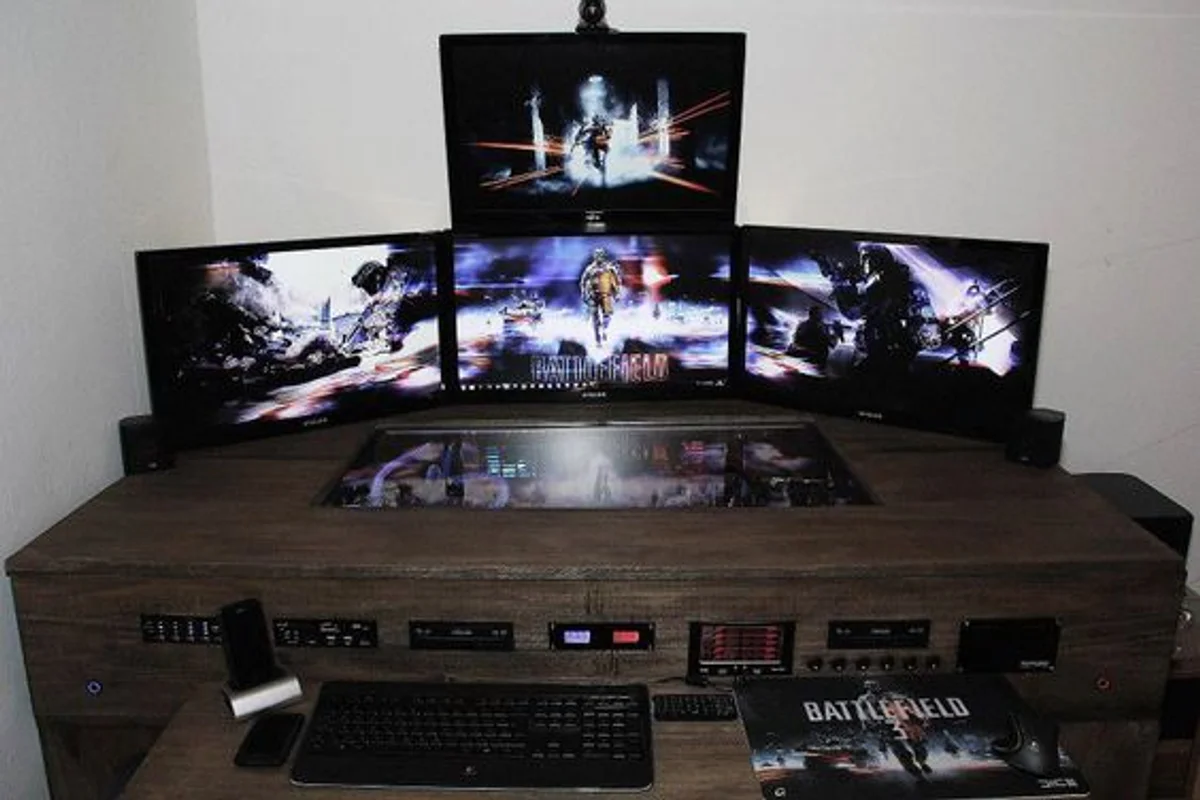

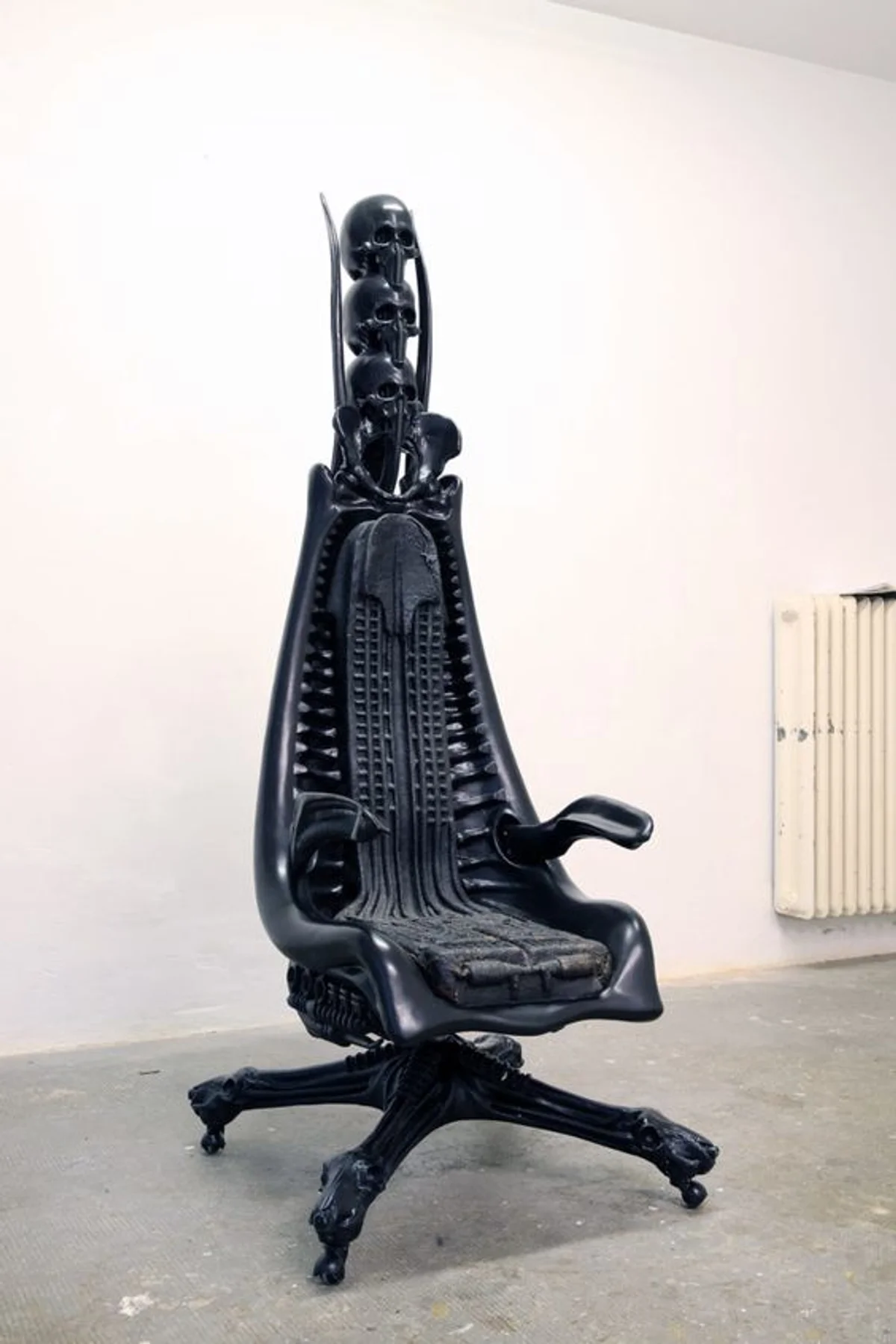
The Mask
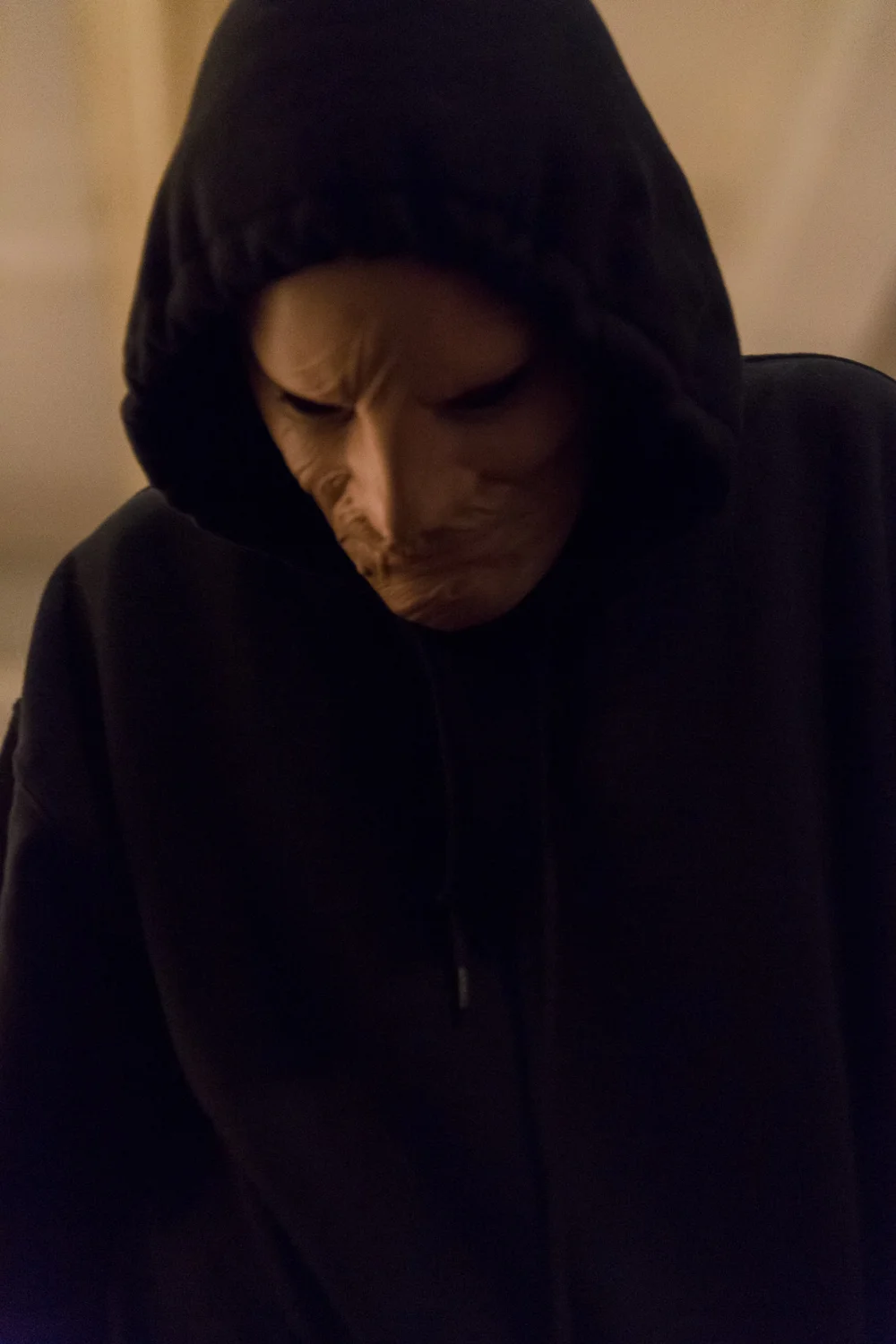
In Internet Ballade, the burnt latex face mask worn by Cécile di Giovanni could evoke a corrupted identity — a scorched surface standing in for the self, marked by trauma, digital saturation, or collective memory. Both protective and disfiguring, the mask becomes a ghostly interface: a ritual object shaped by the aesthetics of horror, cosplay, and internet simulacra. It reflects the violence of visibility in online culture, while also hinting at the monstrous tenderness of bodies shaped by screens.



The Videos
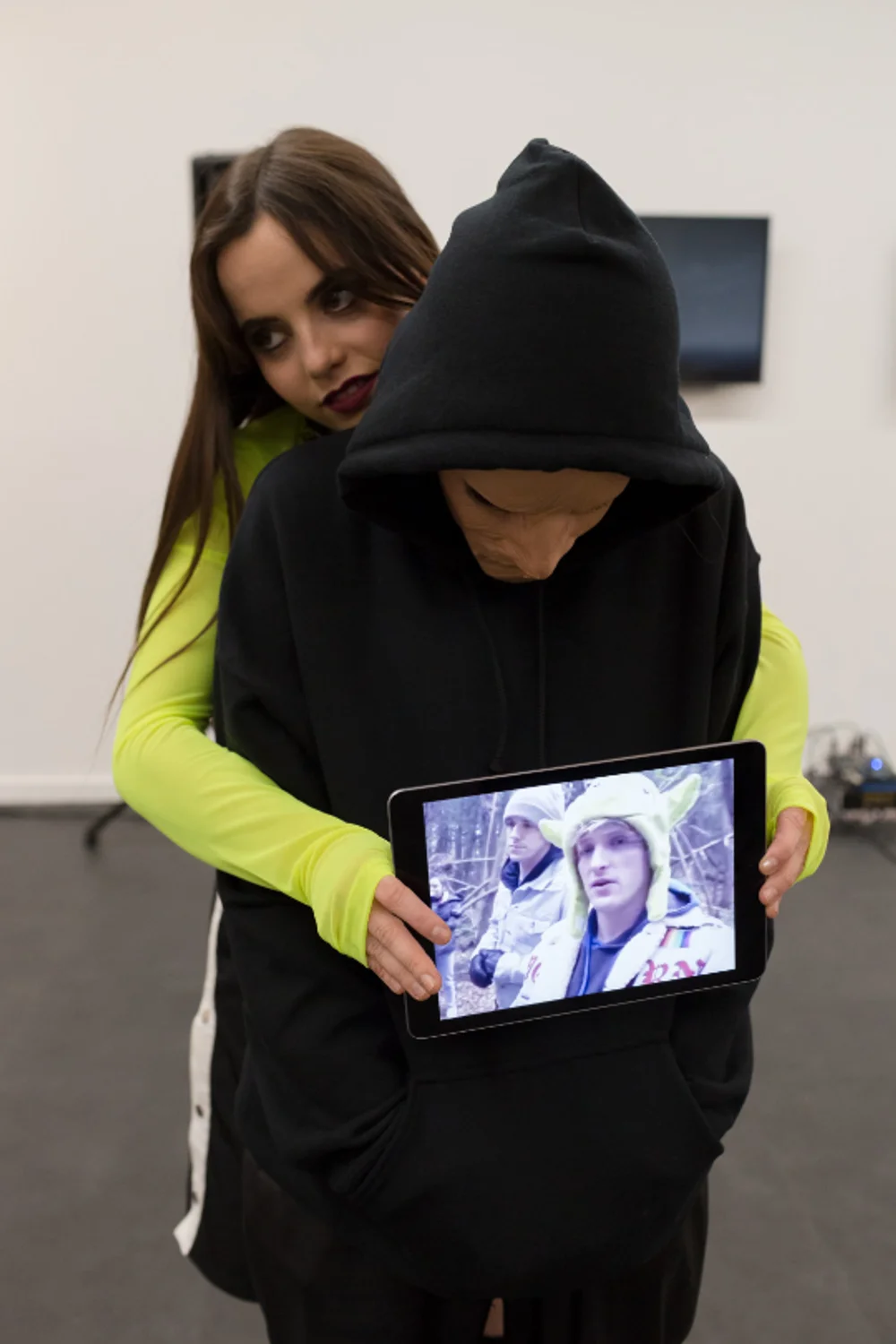
Each of the video and audio excerpts displayed during Internet Ballade was sourced from problematic or unsettling content originally posted on YouTube. Among them: a footage of Logan Paul staging a reaction video near a suicide victim in Japan’s Aokigahara forest, Lindsay Lohan, livestreaming herself in the streets of Paris as she attempts to forcibly take a homeless child with her, a series of cryptic and troubling videos by Marina Joyce that sparked viral concern over her mental and physical health.
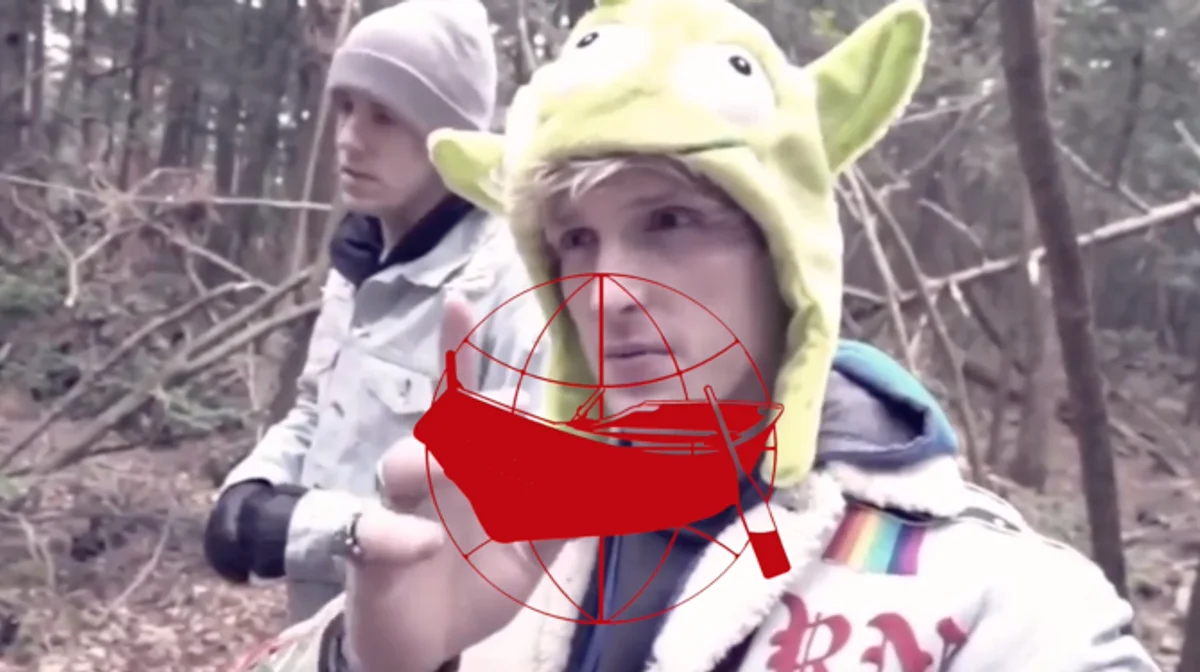

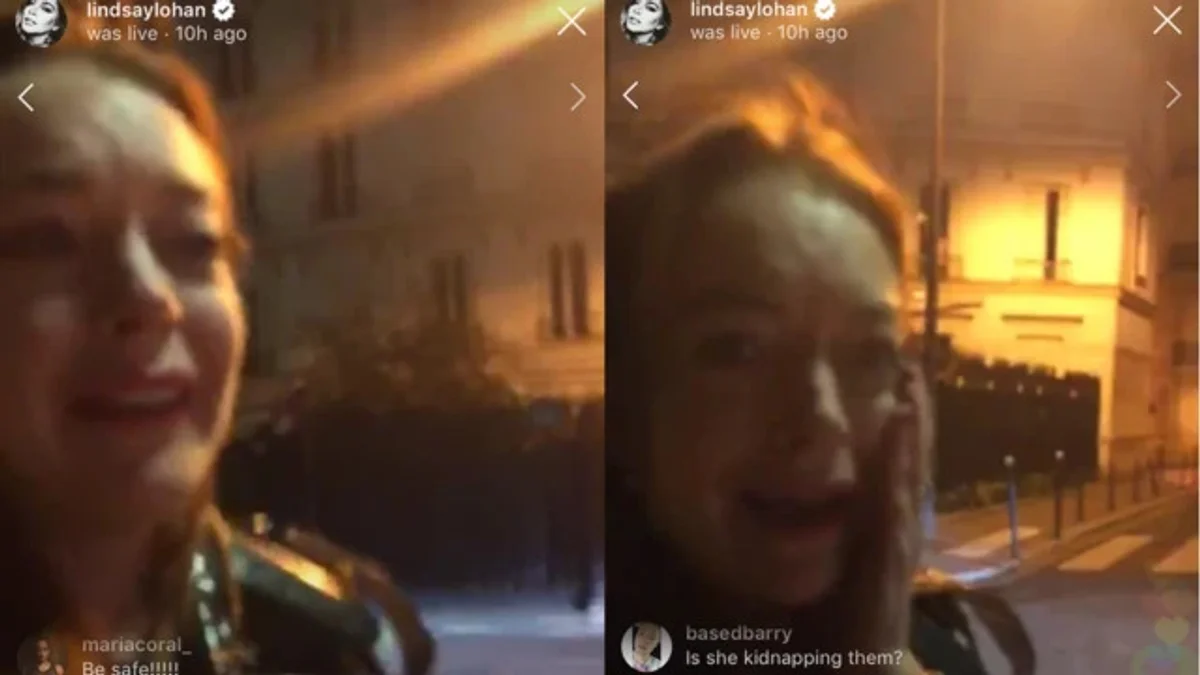
These fragments serve as haunting digital relics — echoing the performance’s themes of emotional dissonance, voyeurism, and the blurred line between spectacle and reality. They embody the darker logic of the contemporary web: a space where personal tragedy is transformed into viral content, and where the repeated exposure to suffering numbs empathy, turning trauma into entertainment.
